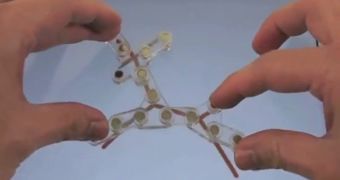Touchscreens are notable for not being possible to manipulate with anything other than our hands and specially-made styluses (which have tips carrying a capacitive charge, unless a resistive panel is used), but this has changed.
A team of researchers from the National Taiwan University came up with a way to allow children to play with their toys on the screen of a tablet or PC.
As people may have learned, there is a small but steadily rising support base for parents who allow their children to start playing with tablets and smartphones from an early age.
Many people, from normal Joes to medics and psychologists, say that buying a tablet for your toddler or pre-teen kid might not be the best idea.
Not just because of the risks to the eyesight, but because it might prevent the children from developing their analysis and interaction skills properly.
Nevertheless, there are quite a few parents that have already bought tablets and the like for their seven-year-old sons or daughters.
On the other side of the field there are the companies themselves. Some have launched kid-centric tablets even, with game apps and the like.
The scientists from the National Taiwan University have finally combined the benefits of normal toys with those of a tablet.
Since there is no way to prevent parents from buying a tablet for their kid if they so choose, they may as well make sure the “threat” of the slate is mitigated.
The researchers’ invention is called GaussBricks and consists of building blocks, or one building block so far, which can interact with apps on a touchscreen tablet.
Magnets are used in the toys, magnets whose fields are picked up by the sensors in a specially designed case. This way, kids won't just randomly tap touchscreens in order to see how the colors change.
The special case is a bit of a downer, but we imagine that makers of kid-cantric tablets won't mind including it, even if it does add something to the cost.
The thing does, after all, track the invisible fields around the magnets quite well, and relays info to the app that can rebuild a 2D version of what the child assembled on the screen. It should stimulate the creativity of the child, and make the whole situation a lot more engaging.
If nothing else, GaussBricks will supply parents with that much needed reprieve, time enough to set up the clothes in the washing machine, and to cook dinner, although it might also lead to tantrums if they try to interrupt the fun.

 14 DAY TRIAL //
14 DAY TRIAL // 